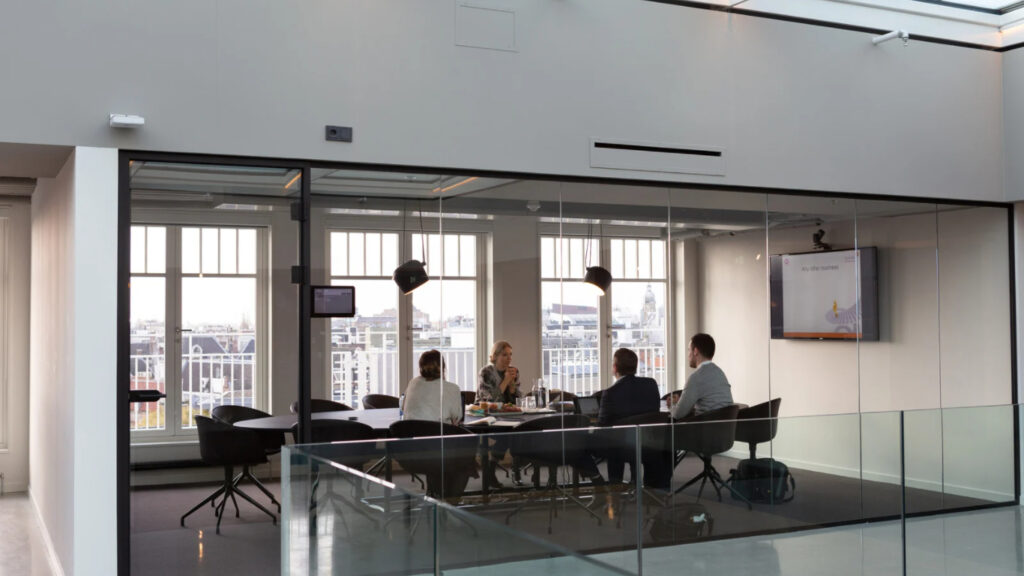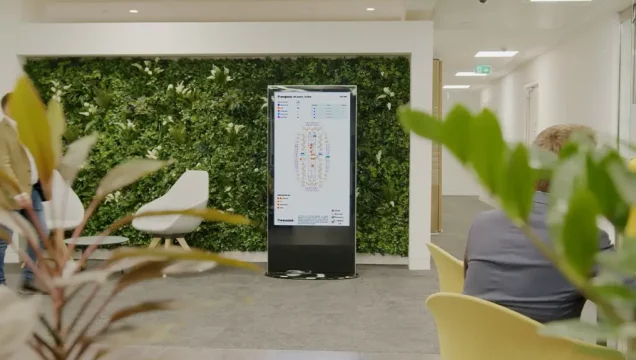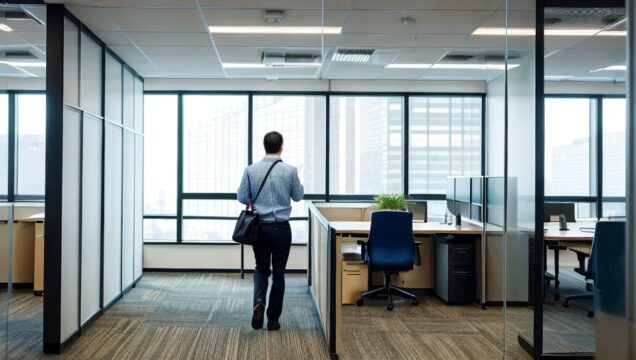

As a business leader, it is crucial to continuously assess the impact of the office environment on the satisfaction and productivity of your employees.
By consistently analysing Key Performance Indicators (KPIs) related to office space, you can make informed decisions to optimise the work experience and improve overall business outcomes.
Understanding where you can enrich your employees’ experience in the office can also help you identify opportunities for growth and development, leading to a more productive and successful organisation.
3 Key categories to determine a successful office environment
There are several categories to consider when measuring the success of the office environment:
- Frequency of use of office facilities
- Physical space
- Employee satisfaction
1) Frequency of use of office facilities
- How often are employees using common areas such as meeting rooms, break rooms, and fitness facilities?
A key aspect to consider when evaluating the success of your office environment is the frequency of use of various facilities. By monitoring the usage of common areas such as meeting rooms, break rooms, and on-site fitness facilities, you can gain insight into which resources are most utilised by your employees.
This information can help you optimise the allocation of these spaces and ensure that they are meeting the needs of your team, but also consider new spaces that will help to improve the employee satisfaction.
Additionally, tracking facility usage can help you identify opportunities for cost-saving measures, such as downsising underutilised spaces or consolidating resources, or repurposing spaces.

2) Physical space
- Is the office layout efficient and conducive to productivity?
- Are there enough private work areas and common spaces for collaboration?
The physical layout of your office plays a crucial role in the productivity and satisfaction of your employees. It is important to evaluate whether the layout is efficient and promotes productivity, as well as whether there is a sufficient balance of private work areas and common spaces for collaboration.
By regularly assessing the physical space of your office, you can identify opportunities to optimise the layout and create a more effective work environment. This may involve reorganising the layout to minimise distractions and optimise workflow or adding additional private work areas or common spaces as needed.
By ensuring that your office layout is conducive to productivity, you can create a more positive and successful work environment for your team.

3) Employee satisfaction
- Are employees’ content with their work environment?
- Are they feeling supported and motivated?
Employee satisfaction is a critical factor in the success of any organisation. By regularly assessing the level of happiness and engagement of your employees with their work environment, you can identify areas for improvement and take action to enhance their experience. This may involve gathering feedback on the overall work environment, as well as more specific factors such as support from management, opportunities for growth and development, and work-life balance.
As per 2017 Gallup’s report, a mere 15 percent of employees are fully engaged in their job roles. Thus, by creating a positive and supportive work environment, you can increase employee satisfaction and engagement, leading to improved productivity and business outcomes.

Tech data to improve workplace experiences
Freespace offers a comprehensive suite of technology solutions that enable businesses to collect and analyse data in the office environment.
By using technology, you can gain a clearer understanding of how your employees utilise the space and identify opportunities for improvement. Whether you are looking to optimise the layout of your office, enhance the work experience for your team, or streamline business operations, workplaces equipped with technology provide valuable insights to help you achieve your goals.
For example, looking at Freespace’s Integrated workplace management system;
- Freespace ONE Sensors can be placed under each workstation to monitor utilisation, and when combined with the employee booking App, can provide insightful information on actual versus planned utilisation. This supports understanding of which type of spaces (i.e., ones with specific equipment, location, etc.) are in demand by employees.
- Freespace TIM Sensors are capable of not only providing you with meeting room occupancy but also identifying the number of people using the space at times throughout the day (providing maximum and average occupancy) enabling decisions on right-sizing your meeting room spaces.
- Freespace’s Employee App functionality includes surveys that can be used to gather feedback from employees on their satisfaction with the office environment and provide assurance to them in return.
- Freespace Analytics can be used to understand various elements of the office settings, from the entire portfolio (i.e., drill down to building and floors), to occupancy (i.e., utilisation by space throughout the day) and demand (i.e., planned versus actual occupancy, most popular areas, heat maps) data.
With this, you can embrace a culture of agile working and collaboration with full visibility that your workplace is optimised for maximum productivity and efficiency.
Enhanced workplaces = Satisfied employees
With the above-mentioned technologies, the employee will possess the right kind of cognitive, physical, and emotional tech assets that drive their performance to an optimal level. When employees are confident in the organisation’s technology resources, it can have a positive effect on their engagement and overall experience. The term “Purposeful Presence” is introduced to describe this particular fact.
Purposeful presence is nothing but a simple proposition which means if you offer a reasonable level of choice to the employees while using the workspace, their office presence and visit will have an accurate and higher purpose.

With Freespace as a partner, you’ll have the right tools and team necessary to enhance both business operations and employee satisfaction – allowing everyone involved to benefit from a better working environment.


